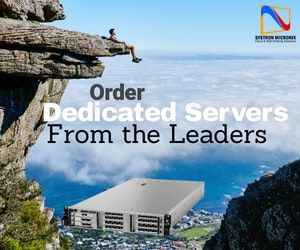Boeing Starliner Lands Safely Without Astronauts Amid Ongoing Thruster Heating Issues


Boeing’s Starliner spacecraft made a successful landing on September 7, 2024, but without its intended crew—astronauts Sunita Williams and Butch Wilmore. The decision to return the spacecraft uncrewed was due to ongoing concerns about thruster heating issues, adding another setback to Boeing’s Commercial Crew Program. This post dives into the landing, the thruster issues, and what this means for NASA and Boeing’s partnership.
The Boeing Starliner spacecraft successfully landed on September 7, 2024, at New Mexico’s White Sands Space Harbor, marking a crucial moment in Boeing’s effort to develop a reliable crew transportation vehicle. However, the capsule returned without its intended astronauts, Sunita Williams and Butch Wilmore, due to unresolved issues related to heating in the thrusters.
The decision to return the Starliner uncrewed was a safety precaution taken by NASA after extensive testing revealed concerns about the thrusters. During earlier missions, the thrusters experienced overheating, particularly after prolonged exposure to sunlight, which caused seals in the valves to deform. While these issues were initially considered manageable, further analysis over the summer led NASA to conclude that there was too much risk to send the astronauts back under these conditions. Boeing engineers were unable to guarantee that the overheating problem wouldn’t recur during critical stages of the mission, such as re-entry and the deorbit burn.
This marks a significant setback for Boeing, which has faced a series of delays and technical issues with the Starliner program, including helium leaks and thruster malfunctions. The company has incurred over $1.5 billion in additional costs, and this latest issue further delays its ability to conduct crewed flights. NASA, however, remains optimistic about Boeing’s partnership and its role in future missions, alongside SpaceX, which has been the primary vehicle for NASA’s crewed missions to the ISS since the retirement of the space shuttle.
Successful Starliner Landing Without Crew
On September 7, 2024, Boeing’s Starliner capsule safely touched down in New Mexico’s White Sands Space Harbor. The uncrewed return was executed flawlessly, with the spacecraft’s parachutes and landing airbags working as expected. This safe return, however, did not include astronauts Sunita Williams and Butch Wilmore, who had initially been scheduled to return aboard the Starliner.
Why Astronauts Were Not Onboard ? : The Thruster Issue
NASA’s decision to withhold crew members from the flight was primarily due to unresolved thruster heating issues discovered during previous tests. The thrusters, which stabilize the spacecraft during re-entry, showed signs of overheating when exposed to sunlight for extended periods. This led to deforming seals, which posed a potential safety risk during critical phases like the deorbit burn【7†source】. Despite extensive testing and temporary fixes, NASA concluded that the risk was too high to bring the crew back under these conditions..
Impact on Boeing and NASA
This latest issue adds to Boeing’s growing list of challenges with the Starliner program, which has faced multiple delays and technical problems. The program has already incurred $1.5 billion in additional costs. While Boeing has been a key partner for NASA, this series of setbacks contrasts with SpaceX’s continued success in crewed missions. However, NASA continues to express confidence in Boeing’s ability to address these issues and remain a viable option for future crewed missions.
Looking Ahead: What’s Next for Boeing and NASA’s Crew Program?
Boeing is preparing for the next steps in the Starliner’s journey, with plans for further testing and improvements to the thruster systems. NASA is hopeful that the spacecraft will eventually meet the standards required for safe crewed flights, ensuring redundancy in the Commercial Crew Program alongside SpaceX’s Dragon spacecraft..
Boeing’s Starliner landing without astronauts highlights the complexities and challenges of space travel. As NASA and Boeing work through the thruster heating issues, the hope is that future missions will restore confidence in Boeing’s role in space exploration. For now, SpaceX remains NASA’s primary vehicle for sending astronauts to the ISS, but Boeing is expected to continue developing its Starliner program.
**SEO Keywords Recap:**
– Boeing Starliner landing
– NASA vs Boeing thruster issues
– Starliner thruster overheating
– Sunita Williams and Butch Wilmore
– NASA Commercial Crew Program

